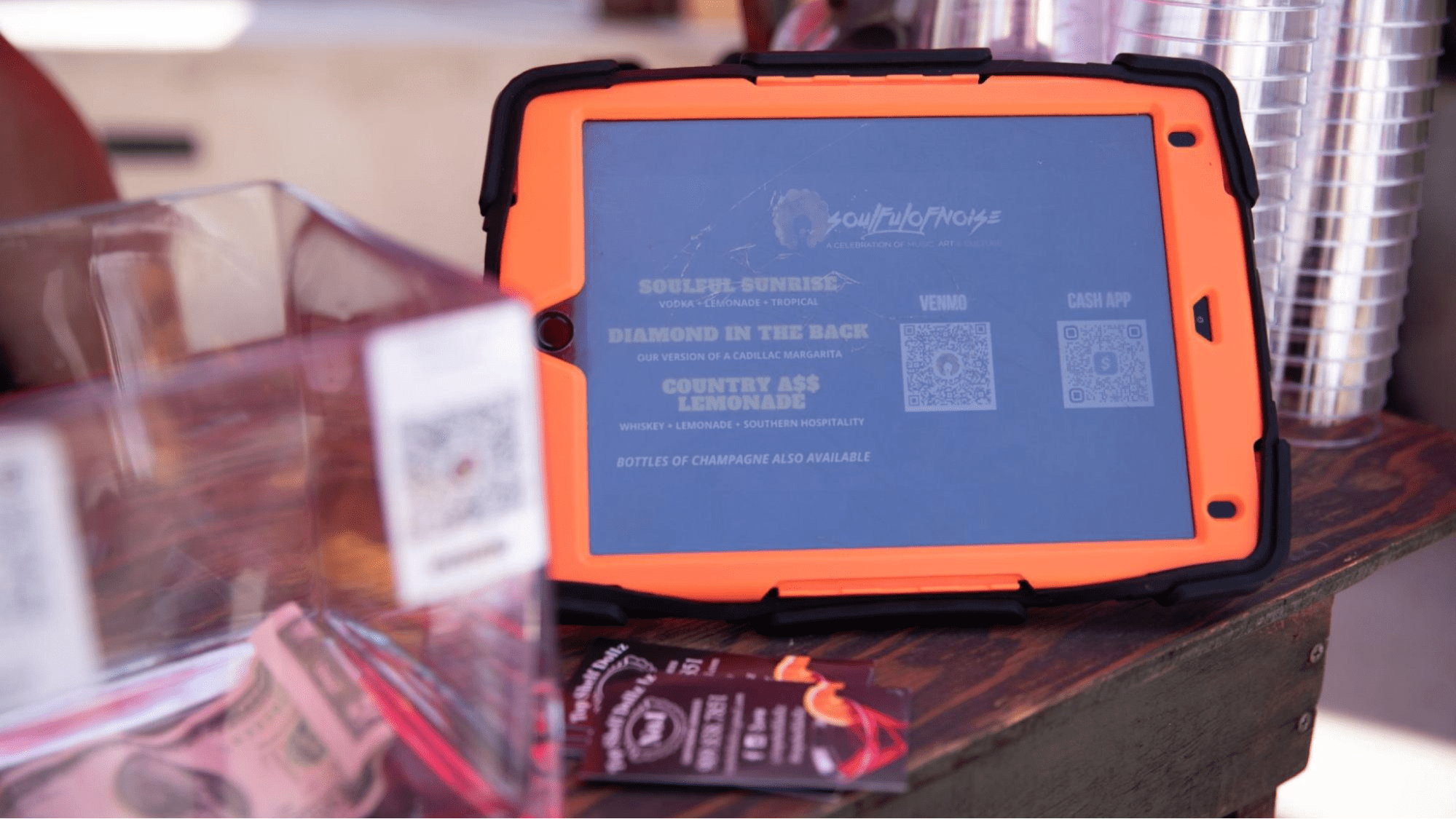Working in the nonprofit space can feel like a constant dash for cash.
But properly executed charity events can be a huge fundraising opportunity — and they can be downright fun!
The potential is huge. Americans gave a whopping $499.33 billion in 2022, and many people would rather attend a fun event than simply donate.
Wondering how to host a charity event that raises a ton of cash for charity? Thousands of nonprofits rely on Eventbrite to promote their events and raise more funds.
This charity event management guide gathers diverse tips from seasoned event hosts. Keep reading to learn 14 key steps to elevate your next charity event.
Table of Contents
Event planning tips for charity events
Marketing tips for charity events
Logistics tips for charity events
Event planning tips for charity events
You’re ready to plan a charity event but have no clue where to start. That’s why we created the steps below for you to lean on.
1. Define your cause, and set a fundraising goal
When determining your event objectives, ask yourself:
- Why are you raising the money? This will help you create an effective event promotion strategy and operational plan. All other decisions cascade from this mission statement. Remember that donations are not the only way to support a cause; your event will also raise awareness and provide networking opportunities.
- How much money are you trying to raise? Think about setting a goal that’s achievable while still being aspirational enough to excite your guests. The SMART goals (Specific, Measurable, Achievable, Relevant, Timely) framework is helpful here. Consider different avenues to maximize your reach. Ticket sales, donations, live auctions, silent auctions, and crowdfunding can all help.
- Who will the money benefit? Think about who will ultimately benefit from the money you’re raising and what that money will do for them. Potential donors like to hear exactly what their donations are going toward. Adding this information to your marketing materials and, most importantly, the reason behind this charity event will help raise awareness for your cause.
💡Pro tip: Make sure your cause shines through in your marketing messaging and at the event itself. Your event programming should help attendees become more educated about the cause they’re supporting and the work your nonprofit is doing.

2. Create a realistic event budget
It takes money to raise money! While costs can be offset through sponsor funds (more on this below), there’s a high risk of out-of-pocket expenses. Making a detailed budget for your event is crucial to raise as much money as possible. Remember, every dollar you save is another that can go toward your cause!
An event budget template helps to keep your finances on track so you can reach your financial goal. The key budget factors to keep in mind include:
- Venue rental costs
- Paid staffing costs
- Catering, refreshments, etc.
- Entertainment and speakers
- Promotions and marketing
- Decorations
- Vendors
- Miscellaneous expenses
Your budget sets the baseline for how much money you need to raise. It’s also a starting point for sponsorship goal-setting. If you can offset most or all of your expenses with sponsors, the majority of your ticket sales will go to support the cause!
💡Pro tip: When crafting your event budget, make sure to reference historical data. This could include records (expenses and revenue) from your own past events or events hosted by similar nonprofits. Reach out to industry connections to see if they’d be willing to share some stats from their past fundraising events.

3. Find the perfect venue for your fundraiser
Your event venue makes a big difference in the success of your fundraising. Here’s what to keep in mind.
Location, location, location
Research, visit, and assess a variety of locations to find one that best suits your event. Your choice of venue significantly impacts attendance, creates the atmosphere of the event, and contributes to the theme.
Keep attendee proximity in mind, as well. If you’ve determined that many of your donors or target donors are located in a specific suburb, look for a nearby venue.
Don’t forget to look beyond just catering halls and convention centers when choosing a charity event venue. Some creative charity events are held in alternative spaces like country barns or rooftop gardens.
Stay within your budget
While location is key, it is just as important to consider what the venue has to offer in terms of discounts or special promotions. Some venues offer discounts for nonprofit events to assist with the event’s fundraising efforts. Carrying out a thorough budget review will help determine how much you can afford.
Partner with other nonprofit event organizers
Partnering with another nonprofit or event organizer could help you save on venue costs by running two separate events on the same day.
For example, if you’re hosting a brunch fundraiser, why not partner with a nonprofit looking to host an evening cocktail mixer? That way, you can rent a single venue for the whole day, cutting your venue expenses in half.
Keep accessibility in mind
Event safety and accessibility aren’t just compliance issues. Making your event more accessible widens your reach and makes your attendees feel welcome. Most importantly, it creates an environment of inclusivity, diversity, and positivity — important ingredients for a fundraiser.
Keep event accessibility in mind when choosing a venue. Here are the factors to keep in mind:
- Adequate doorway width (32 inches) to accommodate wheelchairs
- Accessible signage with large, legible typeface
- Braille signage
- Relief areas for service animals
- Technology to accommodate those with visual or hearing impairments
- Wheelchair-accessible and disability-friendly toilets
The ADA National Network has a complete guide to making temporary events accessible to people with disabilities.
💡Pro tip: Venues can be the biggest expense in your event budget. Try to secure a free event space or a substantial discount by using spaces that are available to you, such as a back garden or someone’s plot of land. Or host an online fundraiser to cut costs.

4. Establish a theme for your charity event
People are excited to support a cause, but they also want to have a great time. 54% of American respondents said they’d rather receive a ticket to a live experience than a physical gift, and 63% of Gen Z planned to attend more live events in 2023 compared to 2022. Attendees love spending money creating memories, and the theme of your event should help tease what awaits.
Remember: “Raise Money” is not a theme. However, “Singles’ Charity Night” is. To inspire donors and attendees alike, come up with a fun and unique event they’ll be excited to attend (and recap on their social media feeds). Include an attraction such as a special guest, musical act, or pop-up shop. This will help get the attention of your target audience and give people something to talk about.
To help you brainstorm, ask yourself these questions:
- How will you reach your objective? Do you have merchandise to sell? Will you be providing entertainment or activities for which you can charge admission?
- Would your target audience be more inclined to take part in a 5K charity race, attend a fashion show, or enjoy a concert?
Don’t be afraid to get creative!
Unique fundraising ideas like a gaming tournament or a polar plunge can help take your event from generic to epic — and boost fundraising success.
💡Pro tip: Historical themes can be a fun fit for charity events. A ‘50s or ‘60s night can help older donors relive their youth, and younger crowds enjoy throwback nights too! For inspiration, check out A Night to Shine: Groovy 60’s Edition from Eventbrite creator Shine and Inspire Fundraiser. To get attendees in the ‘60s spirit, the event organizers provided a prize for the best-themed costume!
5. Find charitable event sponsors
To find sponsors for your charity event, start with your inner circle and work your way outward. First, target businesses and donors that you already know. If your attendees are their prospects or customers, it’s mutually beneficial for them to become sponsors. Local businesses are a great target for sponsorship, as they’re already hoping to attract customers in your area.
Next, check in with your board members and other stakeholders to see if they might have sponsorship suggestions. Finally, reach out to companies that are sponsoring other nonprofit events in your area. Use a platform like ZipSprout to connect with local sponsors.
💡Pro tip: To land more sponsors, make sure to highlight the benefits of sponsoring your event. For example, the number of attendees at a business networking fundraiser is likely to be attractive to a B2B service provider. Sponsors can benefit from getting their names in front of your event attendees, so make sure to explain how in your pitch!

6. Learn from other charity event organizers
The nonprofit world is full of people working hard to support the causes they’re passionate about. In many cases, people are willing to help out their “competitors” (meaning other charities). When learning how to host a charity event, leaning into your network can really pay off.
Attend networking events to connect with other nonprofit professionals. And reach out to connections you have in the nonprofit sector to see how they’re running charity events.
Chances are, they’ve done lots of experimentation and have found what works for them. While these lessons won’t be 100% applicable to your specific charity and goals, you should be able to extract some useful insights.
There are also ways you can work with other charities in mutually beneficial ways. For instance, you could promote their events on social media, and vice versa, to reach each other’s audiences. This can build valuable relationships that can be mutually beneficial for years to come.
💡Pro tip: LinkedIn is the best place to connect with like-minded nonprofit professionals. Spend some time building your network there, and the effort will pay off. LinkedIn also has a variety of useful resources for nonprofits to explore.
7. Secure in-kind donations for your event
In-kind sponsorship, where companies donate goods or services, can be a powerful tool.
Think about all the expenses for your event. Can you seek out in-kind donations or sponsors to reduce these costs and get your event off the ground?
Venues may be willing to provide free rentals or substantial discounts. Caterers may offer the same. Speakers may be willing to waive their fees for nonprofits. Whatever the expense, it never hurts to ask.
Companies and individuals can often use in-kind donations as a tax deduction, so there are benefits for them as well. Make sure to provide the donor with a written acknowledgment of the donation, complete with a fair market value and your nonprofit’s tax ID number.
In-kind donations can also be combined with sponsorship efforts. This gives companies more advertising and publicity. For instance, a catering company could provide free food for your event. You could provide promotional shout-outs to your donors (who may need to hire caterers in the future!)
💡Pro tip: Consider offering perks to in-kind donors and sponsors. Throw in free tickets for their families, access to VIP areas, or even keynote speaker meet-and-greets. For instance, the de Youngsters Day Out event from the Fine Arts Museum of San Francisco offers sponsors generous perks, like free family museum membership and free family admission to the event.
Marketing tips for charity events
These steps will help you get the word out about your event, attract more attendees, and ultimately raise more money.
8. Target the perfect charity event audience
Dial in on your audience. Ask yourself these questions early on:
- Would a charity gala dinner or a golf day be a better fit for the audience you’re working with?
- Does your charity appeal to a particular generation or interest?
- Is it a local fundraiser or a universal cause?
- Is it going to be an invite-only, black-tie affair, or will you reach out to the general public?
- Determine your audience, and your marketing and outreach plan will follow. Audience targeting starts with understanding the different types of audiences and refining which are the best fundraising targets.
Demographics also play a role. For instance, 77% of households in the 61–75 age bracket donate to charity, making this demographic a great group to focus on.
Use data from the US Census Bureau to gather demographic information in your area. City- and county-level data can be very useful for targeted advertising. Charitable giving scales upward with income level, so seeking out higher-income areas to target can also be beneficial.
💡Pro Tip: Once you know who you’re looking for, use targeted advertising to market your event. Eventbrite Ads are a great starting point to promote your event. You may also qualify for free Google Ads advertising (see point #10 below).

9. Market your charity event strategically
Once the details are nailed down, it’s time to get the word out and build excitement for your charity event. For a charity event organizer or fundraiser, spreading the word is crucial — it directly affects your ability to meet your fundraising goals.
Create a strategy that covers all the marketing channels you’ll use. Here are some marketing tips to get you started:
✉️ Email marketing is excellent for targeting existing donors/subscribers. Make sure everyone who has engaged with your nonprofit in the past is aware of your upcoming event through email! Eventbrite includes specialized event email marketing tools for event organizers.
Email can also be useful for running a retargeting campaign for page visitors who haven’t completed the registration. Create a sense of urgency by reminding them of when the sale ends or that the event is almost sold out.
📱Social media marketing is crucial, as nearly 25% of views to event ticketing pages come from social platforms. Eventbrite integrates with Facebook, making it easy to cross-promote your upcoming event. Utilize video clips and images and host social contests and ticket giveaways to build excitement.
📰 Event press releases are picked up by local newspapers and publications. A lot of people still rely on traditional media — don’t miss out on reaching them! Plus, press releases can help get the word out to potential sponsors.
📜 Event flyers and posters are an easy way to get the word out locally. You can also ask the print shop if they have any discounts for nonprofits!
In your marketing efforts, make sure to highlight the cause your event is supporting. But also advertise the experience attendees can expect to enjoy. Both are crucial for building engagement and excitement.
💡Pro tip: With each promotional channel, make sure you keep your target audience in mind. This means advertising where they hang out. Running a charity concert? Your local music shop, senior center, and community bulletin board are great places to hang a poster.
Hosting a charity gaming tournament? Targeting gamers on social media (using interest filters) will be more cost-effective than general ad campaigns.
Use the leading nonprofit ticketing software

10. Utilize Google Ad Grants for Free Advertising
It can be tough to find the budget for paid advertising. Fortunately, Google Ad Grants are available specifically for nonprofits. The program is quite generous, offering up to $10,000 per month of free advertising to qualifying nonprofit organizations.
Nonprofits registered as charitable organizations should qualify, though there is a verification process. Certain groups are excluded, including governmental entities, hospitals, healthcare organizations, and academic institutions. You can find the full eligibility guidelines here.
If you do qualify, these ads can be used for general fundraising efforts and may also be suitable for promoting a specific event.
Better yet, Google Ads have tons of ways to refine your advertising to target the right audience. You can use geofiltering to target a specific area, age filtering, and several other targeting methods.
💡Pro tip: Google also provides free training through Skillshop. To maximize your ad campaigns, make sure to brush up on how Google Ads work for advertisers. You could also seek out a paid advertising expert to volunteer for your nonprofit, perhaps through Catchafire.
Logistics tips for charity events
Ah, the joy of logistics. It’ll only drain you if you don’t have a plan, and that’s why we’re here! Let us guide you on managing the ins and outs of your next charity event.
11. Decide how you’ll accept donations and sell tickets
Offer more than one donation method in order to maximize your fundraising. For many events, ticket sales will be a primary revenue driver. Other methods can include GoFundMe, a donation QR code placed at the event site, and onsite sales of merch/refreshments/etc.
Ticket sales should be your first priority. Start with an online event ticketing platform like Eventbrite. Eventbrite offers full-service ticketing and payments with competitive fee structures.
For at-the-door sales, choose a ticketing provider that provides an app to expedite last-minute sales. The Eventbrite Organizer Check-In App can sell tickets at the door and check in prepaid guests at the same time.
For virtual charity events and live events alike, make it easy to give by providing a link where you can accept donations. You can also set up a donation option on your event listing for quick and easy digital giving so people can donate even if they can’t attend.
💡Pro tip: Think past ticket sales to explore other donation and fundraising options. Raffles, live auctions, and even simple donation boxes/QR codes onsite can boost fundraising numbers. Take “We Get To Raffle” 2024, hosted by the Get To® Foundation, for inspiration. The organizers offered a generous $5,000 grand prize, a 50/50 raffle, and dinner and drinks included in the ticket price.

12. Recruit, train, and manage your volunteers
Successful charity events run on the enthusiasm and support of their volunteers. The best place to look for volunteers is among your donors and community supporters, including people on your mailing list. Past event attendees are also a great source for recruiting.
It’s important to recruit reliable volunteers who will show up and charm donors. Use these three tactics to weed out unreliable volunteers and make sure your efforts pay off.
✅ Pre-qualify volunteers: Make sure you’re not just finding people who want to volunteer, but those who can actually do the job. When they sign up, ask potential volunteers what other events they’ve volunteered to staff, what their role was, and why they want to help at your event.
📚 Create an orientation program: Whether the event is in person or online, give an overview of what volunteers should expect on event day and what will be expected of them.
👱🏾 Designate a volunteer lead: Your volunteer lead will be responsible for getting volunteers up to speed on everything, from logistics to onsite tech. Build in ample time to train volunteers so that there is no confusion or last-minute stress on the day of the event.
⭐Offer some volunteer perks: To encourage volunteering, offer free food on the day of the event or free tickets for their friends and family.
💡Pro tip: You can also use third-party volunteer sourcing websites to help. For example, Volunteer Match helps match volunteers with nonprofits looking for assistance. Catchafire is another platform that matches charities with skilled (mostly remote) volunteers in specific areas — like marketing or design.
13. Automate your charity event technology
The more efficient you can be, the more money you can raise! Event management software can help reduce manual effort and automate key steps. For instance, automated emails can give attendees detailed event information upon ticket purchase without having to manually email ticket holders.
Use a management tool for event planning, ticketing, and marketing tools wrapped into one to save you time and increase your outreach.
💡Pro tip: Don’t be afraid to invest a bit of your budget in technology. By improving your efficiency, you can drive better outcomes across attendance, fundraising, and donor experience. This can more than makeup for the cost of event software. Just make sure to work any costs into your event budget ahead of time.

14. Perfect your event logistics strategy
Keep your event running smoothly with a detailed event logistics strategy that covers all the important bases:
⏱️ Timing for day-of logistics: Try to get the venue keys as early as possible to get a jump on setup.
🌯 Vendor and catering logistics: If you can, batch tasks like vendor check-in to save time.
💁 Staff and volunteer logistics: Provide training materials to make sure your helpers are prepared.
🎤 Tech logistics: Thoroughly check all your tech gear as early as possible (ideally the day before the event).
A good event logistics plan should also help you prepare for potential issues. Creating contingency plans for common issues (bad weather, WiFi issues, etc.) can help you prepare for any mishaps on the day of the event.
💡Pro tip: Event logistics planning should involve everyone who will be a part of event day. Make sure to communicate your expectations for the day with your team well beforehand. Ideally, host a logistics meeting with your event staff, volunteers, and potentially even vendors before the event.
Raise more funds at your next charity event
Now you have a solid plan in place for how to host a charity event. These charity event management tips are applicable to most event types.
But you can also learn by doing! Make sure to set time aside after your event to think about what went well — and what could use more attention next time.
To maximize fundraising success, make sure you have the right tools in your toolbox. Eventbrite makes it easy for nonprofit professionals to plan, promote, and host charity events all over the world.






